Penghu (澎湖) is a Taiwanese archipelago in the South China sea (also called the Pescadores – a name originally given by Portuguese explorers), located between the main island of Taiwan and the Chinese mainland. It is this location that makes it a particularly windy place, as the northeast monsoon winds get squeezed between the two landmasses into a tunnel. The islands receive surprisingly little interest from the regional windsurfing and kitesurfing community, however given the clean, unspoiled beaches and very predictable wind, this destination is well worth a visit.
On the way from the airport and frequently across the archipelago you will see a traffic sign warning vehicles (ie scooters and motorbikes) of strong wind. I had never seen such a sign, but took it for a good omen and I was not disappointed – Penghu offers truly amazing conditions for kitesurfing and windsurfing !
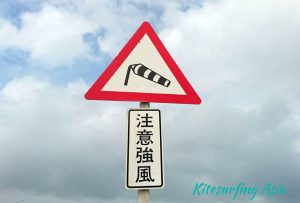
Wind season and conditions
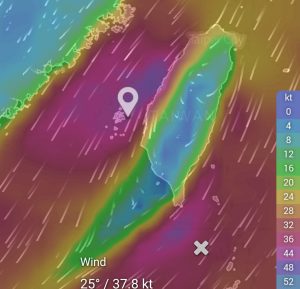
The wind season in Penghu is long and lasts from September until May. In September and early October typhoons in the region can make kiting temporarily impossible for two different reasons – typhoons hitting the island would make conditions too extreme, while typhoons passing in a certain distance can suck up all the air around them resulting in a few wind-less days in Penghu. But barring typhoons at the beginning of the season, there is almost always wind at the Pescadores – and usually a lot of it. Typical wind speeds in the 30-50 knot range and the kites used here are small – usually 6m2-8m2. Heavier kiters may occasionally need a 10m2 kite on light-wind days and light kiters may need a 4m2-5m2 kite on strong-wind days.
Water temperature is very pleasant in October and does not require a wet suite, the air temperature also remains warm (25 degrees Celsius or above). It is often sunny and a t-shirt and shorts are perfect attire. A wind-breaker can be handy for evening strolls given the incessant wind. All of this changes as the winter begins in earnest and in January/February a wet suit is indispensable for kiting as well as warmer clothes as temperatures are in the 15 degree Celsius range.
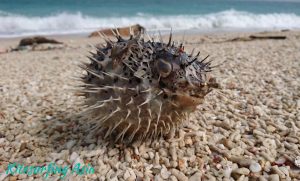
It is worth mentioning, that the wind high-season happens to be the low-season for tourism, so you do not overlap with the summer crowd. Prices of accommodation tend to be lower and plenty of options available. The island receives mostly Taiwanese tourists during the summer months (June-August) and only occasional travelers during the rest of the year. Indeed some shops and restaurants close completely for the winter months.
The Spots – where to kite?
Penghu is lightly populated and has over 90 islands and 300 kilometers of coastline. This stretch of coastline is full of opportunities and spots where you can just pump your kite and get going. I will cover 3 spots here, that I have tried and where you are more likely to meet other kiters.

Longmen beach (龍門沙灘) is probably the most popular spot for kiteboarding in Penghu and you can find a small group of 4-8 kiters and windsurfers here on most windy days. It is located in the east of the main island (thus receiving side-shore wind). From Longmen village you need to take very narrow but paved roads to the beach. This beach forms a kilometer-wide bay and is a perfect spot for riding waves and making jumps off the flat parts of waves or off the waves themselves. The best wave riding area with a long break is in the southern part of the bay, so you have to kite across the bay from the map marker to get there. There is a parking area and toilet in the middle part of the beach. This spot works well with a high tide. When the tide is low, a few rocks crop up on the sides and it becomes quite shallow (less than 1 meter), making potential falls and landings unpleasant. You can check tide times on this windfinder page. As of the time of writing the spot at Longmen had a simple self-launch kitehook that would allow you to launch the kite yourself if nobody happens to be around. The Sunrise BnB is located nearby (see the accommodation section for more details). A fair amount of wood and some trash litters this beach as it is thrown out by the sea regularly.
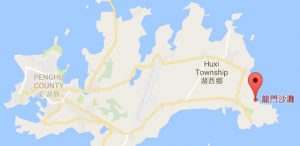
Baikeng beach (白坑沙灘) is another excellent spot if you prefer flat water. The long beach is protected from the north and the east and receives no waves. Make sure you come here during high tide, as it becomes very shallow and rocks come out of the water during low tide.
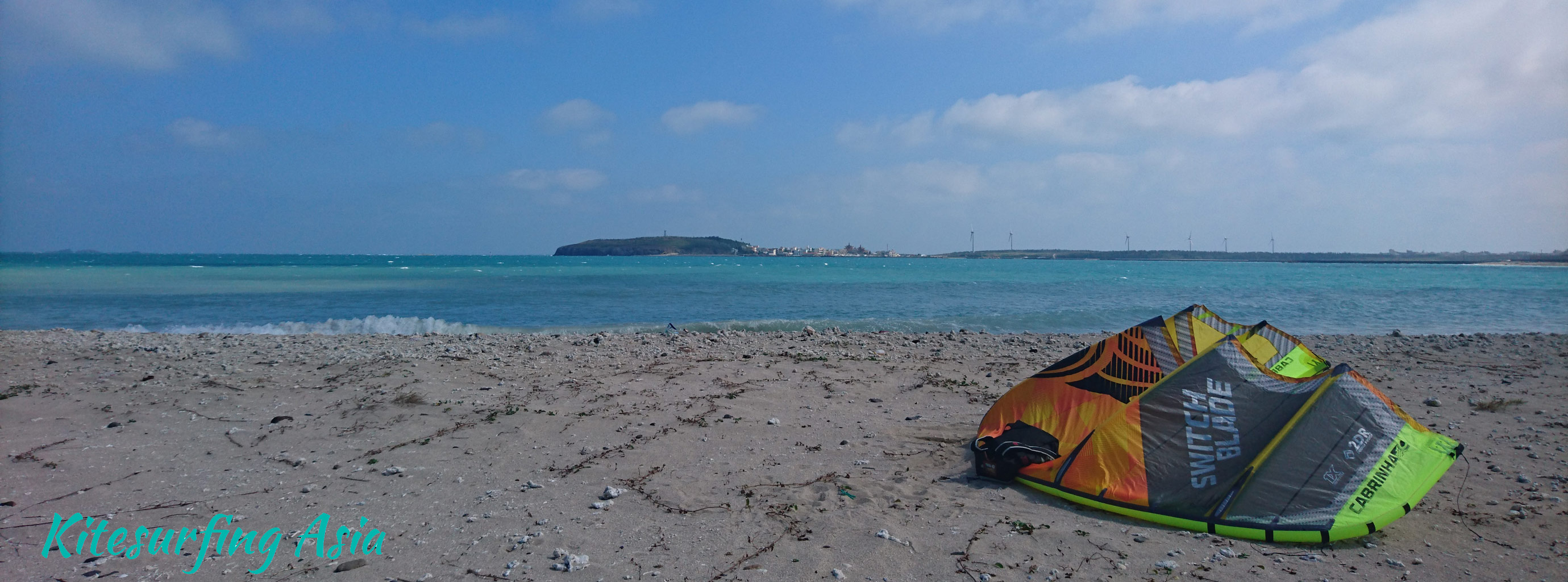
When coming from Magong on road 202 there is a turn left for QingLuo (青螺) a few hundred meters before Huxi (湖西) village – check out the exact location on the map below. The Liquid Sport Bed and Breakfast is located within a few hundred meters of this spot (see the accommodation section for more details).
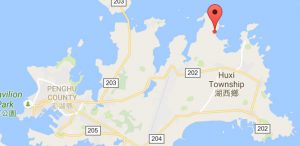
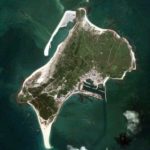 Jibei Island (吉貝嶼) is the place for you, if you’re looking for an awesome, secluded and unspoiled place. It is a small inhabited island about 5 kilometers north of Baisha (白沙) – the northern-most part of the main bridge-linked island chain. A 30-minute boat ride from the Chi Kan Ferry Terminal (赤崁碼頭) located in Baisha takes you to this small island. You will arrive in the port of the only town on Jibei. There is a scooter rental shop and a few home stays (民宿). You will be rewarded for venturing so far by a spectacular 500-meter long sand bank in the south, which is suitable for kiting. There is also a flat-water area in the north-western part of the island as well as (untested) beaches with waves and onshore wind in the north-east. You are unlikely to meet other kitesurfers here on an average day.
Jibei Island (吉貝嶼) is the place for you, if you’re looking for an awesome, secluded and unspoiled place. It is a small inhabited island about 5 kilometers north of Baisha (白沙) – the northern-most part of the main bridge-linked island chain. A 30-minute boat ride from the Chi Kan Ferry Terminal (赤崁碼頭) located in Baisha takes you to this small island. You will arrive in the port of the only town on Jibei. There is a scooter rental shop and a few home stays (民宿). You will be rewarded for venturing so far by a spectacular 500-meter long sand bank in the south, which is suitable for kiting. There is also a flat-water area in the north-western part of the island as well as (untested) beaches with waves and onshore wind in the north-east. You are unlikely to meet other kitesurfers here on an average day.
How to get to Penghu?
There are no direct international flights to Penghu (澎湖 / MZG), but there are several flights a day from Taipei Songshan airport (松山 / TSA) as well as from Taizhong (台中 / RMQ) and Gaoxiong (高雄 / KHH). If you are arriving in Taipei from abroad, you will most likely land at Taoyuan (桃園) airport, and you would need to transfer to Songshan airport by bus, which takes about one hour (it’s actually very easy as there is a small bus terminal at Taoyuan airport).
Internal flights in Taiwan are frequent and work almost like a shuttle service and it’s quite easy to buy a ticket at short notice. The tickets are usually exchangeable and reimbursable. There are three airlines that fly to Penghu from the main island. Tickets can be purchased online (probably in Chinese only) or at any 7-11 or Familymart store in Taiwan from the self-service kiosk.
Accommodation in Penghu
Once transportation is sorted, the key decision you will have to make regarding your trip to Penghu is where to stay. You can either stay at a Bed and Breakfast close to the kitesurfing spot or in town. The main town called Magong (馬公市) has a population of about 60 thousand, many nice local restaurants, and eateries – especially along the main street – a lively food market and a few nice areas for an evening stroll. It is a 20-25 minute ride away from the beach spots mentioned above (still further from Jibei of course), and in practice you will need a car to go kiting. On the other hand, the two BnB’s are a few hundred meters away from the spots (you will still need a scooter), but are in quiet villages with limited lunch options and even more limited dining options. Ultimately the choice depends on your priorities, the length of your trip etc.
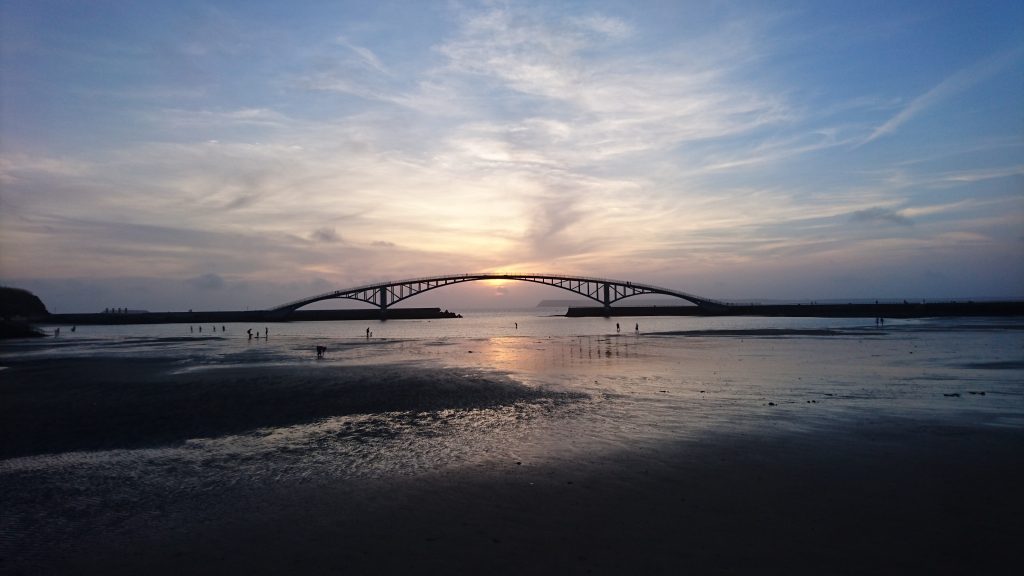
In Magong there are several hotels (including a Sheraton) as well as many smaller BnB’s who have rooms for rent. For more information on bed and breakfasts in Magong I would suggest you google “馬公 民宿”, which will bring up relevant results. One hotel I can recommend is the Bowa (寶華大飯店) in the center of Magong on the main road overlooking the sea. It’s a mid-range, mid-sized, clean and well-run hotel with very nice reception staff who can also help with such things as car rental.
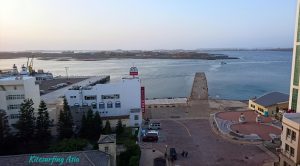
Regarding accommodation options close to a kitesurfing spot, I am aware of two BnB’s. The Sunrise B&B (果葉觀日樓) is located in the Guoye (果葉) village, about one kilometer away from the Longmen spot (see above). It is run by avid kitesurfers (daughter and father) who are on the beach on most days and you can count on their support when staying here. Equipment rental is available. You will need to rent a scooter and a small trolley (which you can attach to the scooter) to bring your gear to the beach. The nearest 7-11 shop and restaurant are in Huxi (湖西) about 2 kilometers away.
If you are a windsurfer or prefer to kite on the flat water Baikeng beach, you may consider the Liquidsport Penghu B&B (愛玩水民宿). The manager is a very experienced windsurfer and his associate has represented Taiwan at the Olympics in windsurfing not too long ago – they are the local authority for this sport. The Liquidsport is located on a small peninsula and you can potentially kite/windsurf on both sides of it. The nearest beach is around 400 meters away, but you will still need a scooter or car to reach the other beaches on the peninsula.
Other attractions in Penghu
Penghu is an exciting spot for Kitesurfing, but there are other free-time activities here that can keep you busy before and after the trip to the beach. In fact, the archipelago receives quite a few Taiwanese tourists in the summer months who come here to enjoy the relaxed seaside atmosphere, cycle or to enjoy local snacks and seafood. There goes a short list of various options we had a chance to experience:
Breakfast Alley: The locally famous breakfast alley in Magong (早餐街) is on Wenkang Street (文康街) and has several breakfast shops, some of which get quite busy in the mornings. Options on the menus include several kinds of fresh and warm Taiwanese savory pancakes (蛋饼), sandwiches ( 三明治), various types of burgers and in particular the Taiwanese pork burger called Guabao (刈包) as well as dumplings and soup. Most of these shops close by 3 o’clock in the afternoon.
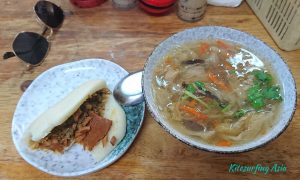
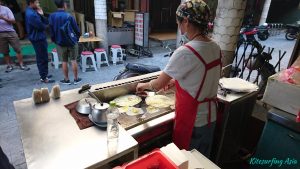
Aimen beach and Lintou park: Aimen beach (隘門沙灘) is a pleasant sandy beach in the south of the island. It is a favorite among locals who come here on week-ends to stroll through the Lintou park (林投公園) and for a drink at the Gilly Primavera (及林春咖啡館) coffeeshop, which has an outside area literally on the beach. The beach is appropriate for longer walks as no end appears in sight. There is also a camping site nearby.
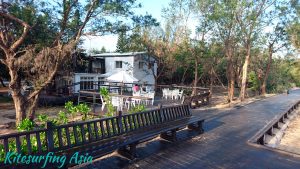
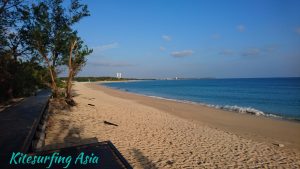

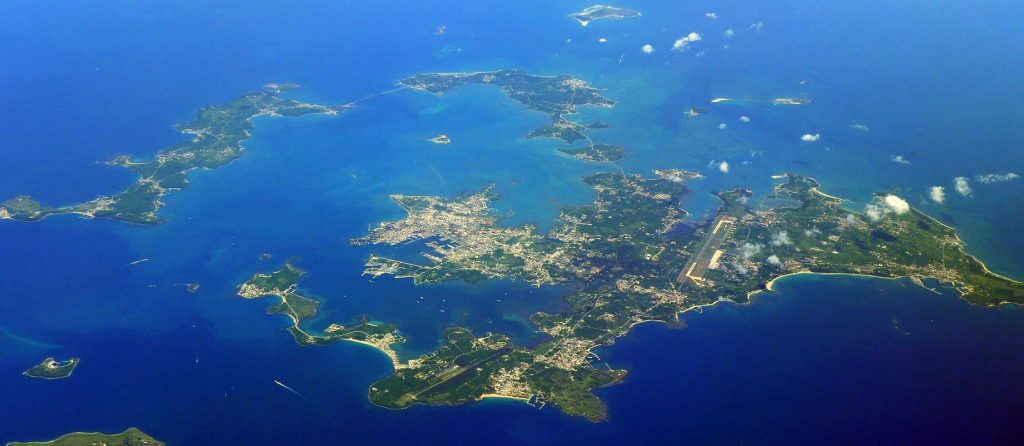
Hi, great post! I will be in Taiwan in October and would live to check out Peng Hu. I can’t find any flights on Sky Scanner… How do you get there?
Hi Thomas, thanks for reaching out. I will be updating the post with some info on transportation and will drop you a line when it’s done. In short you should try UniAir, Mandarin Airlines or Far Eastern Airlines (FAT).
Great report on Penghu Kitesurfing scene.
I believe we met a few times at Longmen Beach.
I am “the father of Sunrise BnB”.
I recently started using Tweeter and found you are active and like to say Hi to you. Hope to see you soon in Penghu again.
Here is my tweet site: @PenghuKitesurf